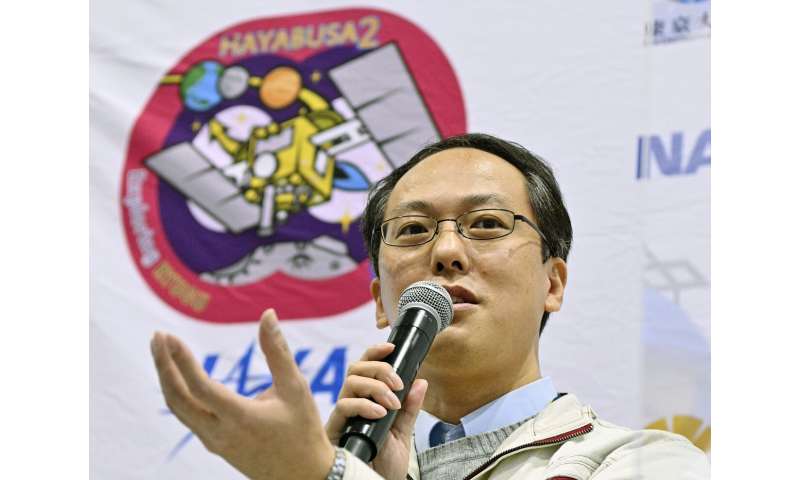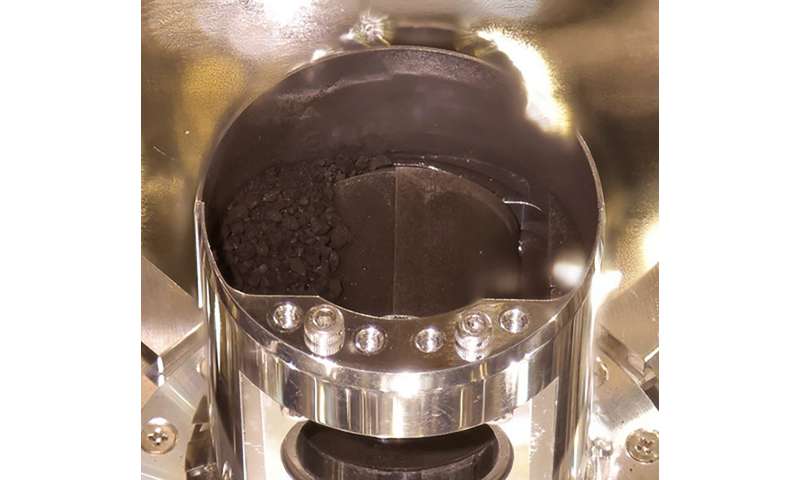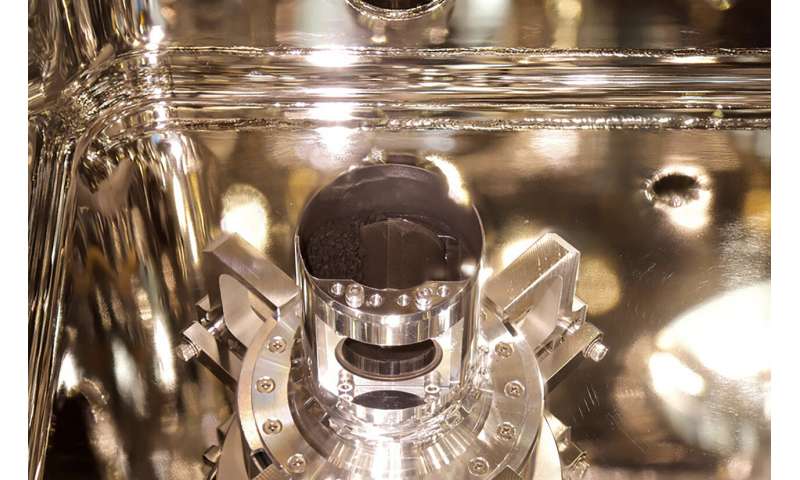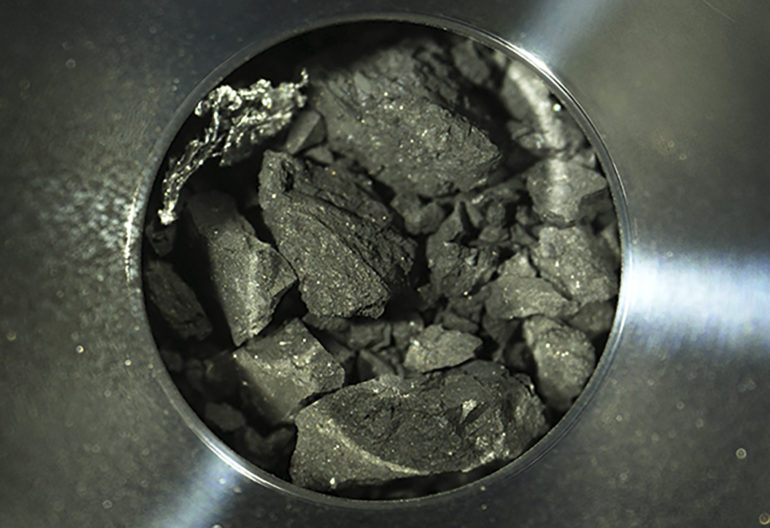They resemble small fragments of charcoal, but the soil samples collected from an asteroid and returned to Earth by a Japanese spacecraft were hardly disappointing.
The samples Japanese space officials described Thursday are as big as 1 centimeter (0.4 inch) and rock hard, not breaking when picked up or poured into another container. Smaller black, sandy granules the spacecraft collected and returned separately were described last week.
The Hayabusa2 spacecraft got the two sets of samples last year from two locations on the asteroid Ryugu, more than 300 million kilometers (190 million miles) from Earth. It dropped them from space onto a target in the Australian Outback, and the samples were brought to Japan in early December.
The sandy granules the Japan Aerospace Exploration Agency described last week were from the spacecraft’s first touchdown in April 2019.
The larger fragments were from the compartment allocated for the second touchdown on Ryugu, said Tomohiro Usui, space materials scientist.
To get the second set of samples in July last year, Hayabusa2 dropped an impactor to blast below the asteroid’s surface, collecting material from the crafter so it would be unaffected by space radiation and other environmental factors.



Usui said the size differences suggest different hardness of the bedrock on the asteroid. “One possibility is that the place of the second touchdown was a hard bedrock and larger particles broke and entered the compartment.”
JAXA is continuing the initial examination of the asteroid samples ahead of fuller studies next year. Scientists hope the samples will provide insight into the origins of the solar system and life on Earth. Following studies in Japan, some of the samples will be shared with NASA and other international space agencies for additional research.
Hayabusa2, meanwhile, is on an 11-year expedition to another small and distant asteroid, 1998KY26, to try to study possible defenses against meteorites that could fly toward Earth.
Japan’s space agency finds ample soil, gas from asteroid
2020 The Associated Press. All rights reserved. This material may not be published, broadcast, rewritten or redistributed without permission.
Citation:
Japanese spacecraft’s gifts: Asteroid chips like charcoal (2020, December 24)
retrieved 24 December 2020
from https://phys.org/news/2020-12-japanese-spacecraft-gifts-asteroid-chips.html
This document is subject to copyright. Apart from any fair dealing for the purpose of private study or research, no
part may be reproduced without the written permission. The content is provided for information purposes only.



